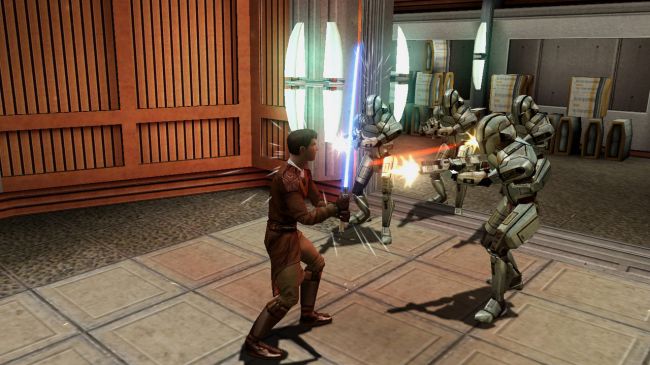Listen up, because I’m only going to say this once. Forget Star Wars: Battlefront 2 When it comes down to it, there’s only one version of Battlefront worth remembering and reflecting upon. And – just a little FYI – it came out in 2004, not 2015, and it was developed by Pandemic, not DICE. Oh yes my friends, this is the hot take that you were looking for.
DICE may well have done a fantastic job in delivering the most overtly authentic version of the Star Wars universe in a video game – capturing the sights and sounds of the original trilogy in a way that had never before seemed plausible, let alone possible – but it failed to accurately convey the franchise’s most important commodity: its soul.
DICE's more Star Wars Battlefront 1 and 2 have scale, but fail to generate any real friction between opposing forces (despite all that loot box controversy). It can have 40 players running around inside its faithfully recreated maps, but no real sense of escalating emergency or chaos. Its largest scenarios build around obvious rails and banding, dictating the ebb and flow of its theme park battles so fervently that you never really feel as if you are making an impact among the mess of conflicts occurring elsewhere. But it’s here where Pandemic seemed to excel, revelling in the opportunity to deliver a game that could truly fulfil the Star Wars fantasy for fans of the prequel and original trilogy alike for the very first time.
Humble origins
Battlefront began development in 2002 and, looking back at it today, it’s easy to appreciate the ambition that fuelled it. It’s a shooter built around team strategy and synergy, one that would feature battles, worlds and characters from the first six Star Wars movies. It was designed as a predominantly online multiplayer experience, with a single-player mode included to help account not only for those that hated playing nicely with others, but for the occasionally unreliable Xbox Live servers of the era.
It was to be the most authentic Star Wars experience available at the time, pushing the ageing console hardware to its fullest in an effort to make use of new rendering, animation and artificial intelligence techniques and systems. And, of course, there was perhaps Battlefront’s most important development pillar: the studio wanted you to be able to slaughter Ewoks and Gungans to your heart’s content. Hell, the first mission of Battlefront’s Clone Wars Campaign tasks you with destroying the Gungans from the perspective of the Empire; it’s perhaps one of the most cathartic single-player missions ever seen in a video game.
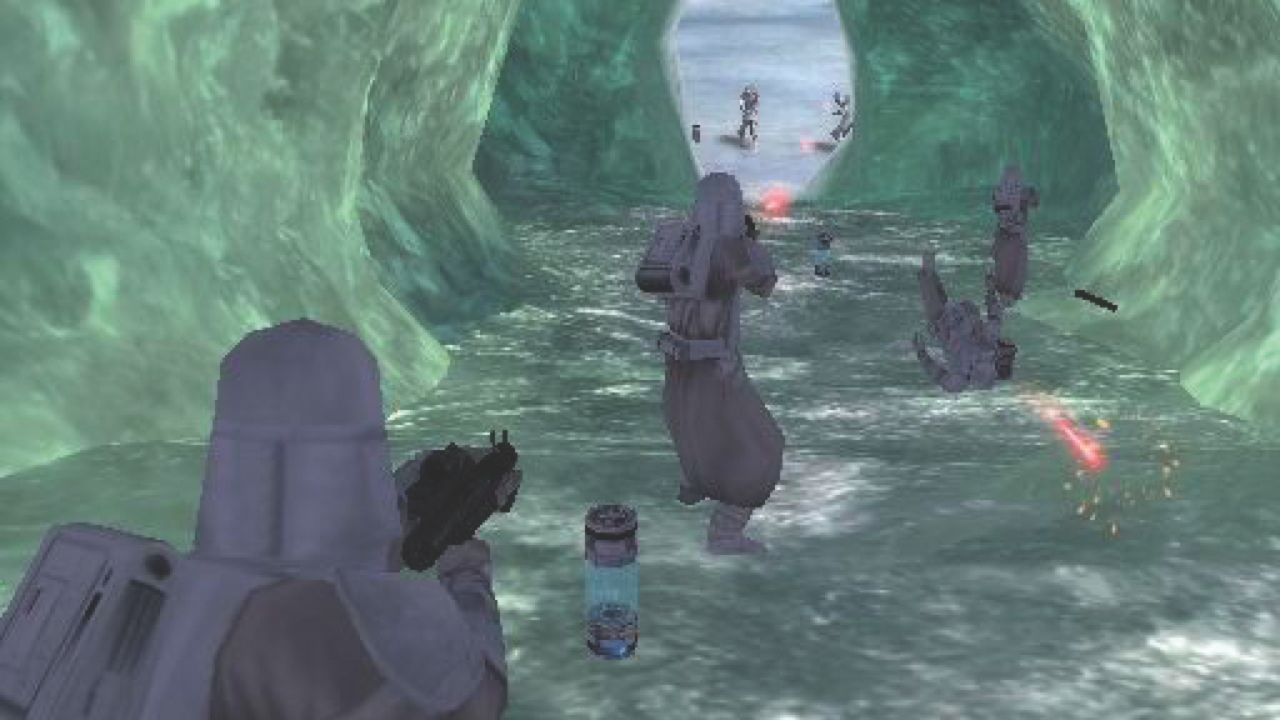
Pandemic saw the value in Star Wars, not just as one particular setpiece, family or trilogy, but as a powerful whole just waiting to be leveraged. The resulting experience is something we still talk about today. The staggering 3D environments, the chaotic composition to its combat, the complex AI that fuels it, and, to be frank, a pretty ridiculous amount of playable content to sink your teeth into – Battlefront truly is a game built in service of the player and old school retention tactics, rather than season passes and micro-transactions. Its revival may be the centrepiece to EA’s modern shooter strategy, but it has also become the target for much of the community’s ire, in part due to the strength of the 2004 classic. In spite of its problems, Battlefront sets an impossibly high benchmark for quality, content and replayability.
Many Star Wars video games have had a tendency to thrust you on a wild heroes’ journey to fulfil the fantasy, or have skipped Dagobah system theatrics altogether and stuck a lightsaber into your hands from the off; Battlefront delivers because it keeps its action grounded.
Sign up to the GamesRadar+ Newsletter
Weekly digests, tales from the communities you love, and more
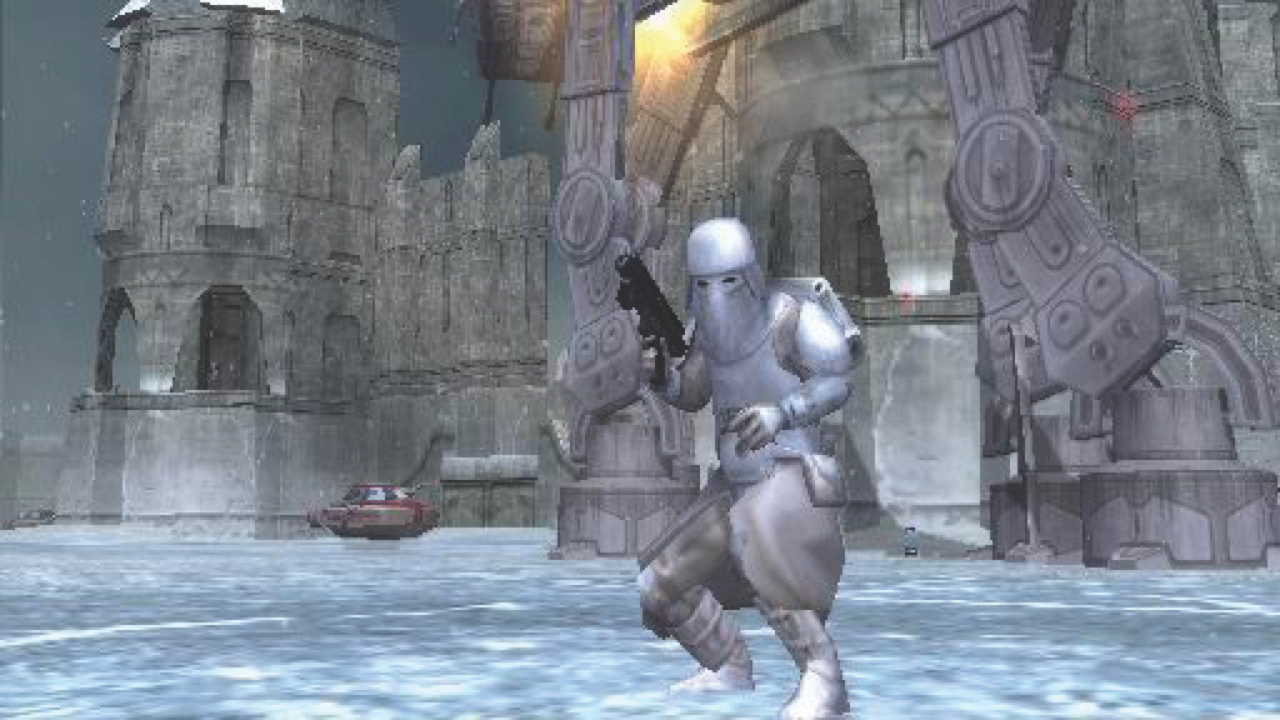
On the ground
The game takes great pleasure in putting the player into situations where, at a glance, it looks as if there is little chance of turning the tide in your favour – not on your own, at any rate. Huge clusters of enemies will swarm objective points; ground vehicles will flood in from all sides of the lush 3D environments as famous fighters whip past overhead. Taking your first steps out into locations such as Geonosis, Kashyyyk, Hoth and Bespin Cloud City is awe-inspiring, and quickly fatal. The scale is difficult to grasp, not because of impressive draw distance or graphical tricks (not in 2004), but because they seem endlessly traversable, with the pockets of conflict creeping out to all corners of the maps.
Each skirmish is a delicate recreation of what we have seen on screen many times before. Everything has a very real, tangible quality to it; being given the freedom to, at any time, commandeer a vehicle and storm it towards command posts with an army of AI soldiers in tow never fails to feel empowering, while the ability to actually take off and land X-wings and TIE fighters mid-battle is still a technical marvel. Unfortunately, many of these features may have been lost in the 2015 edition in the name of balance, but it sure does feel good to down an AT-AT in a snowspeeder and then immediately turn your attention to ground assault without a thought.
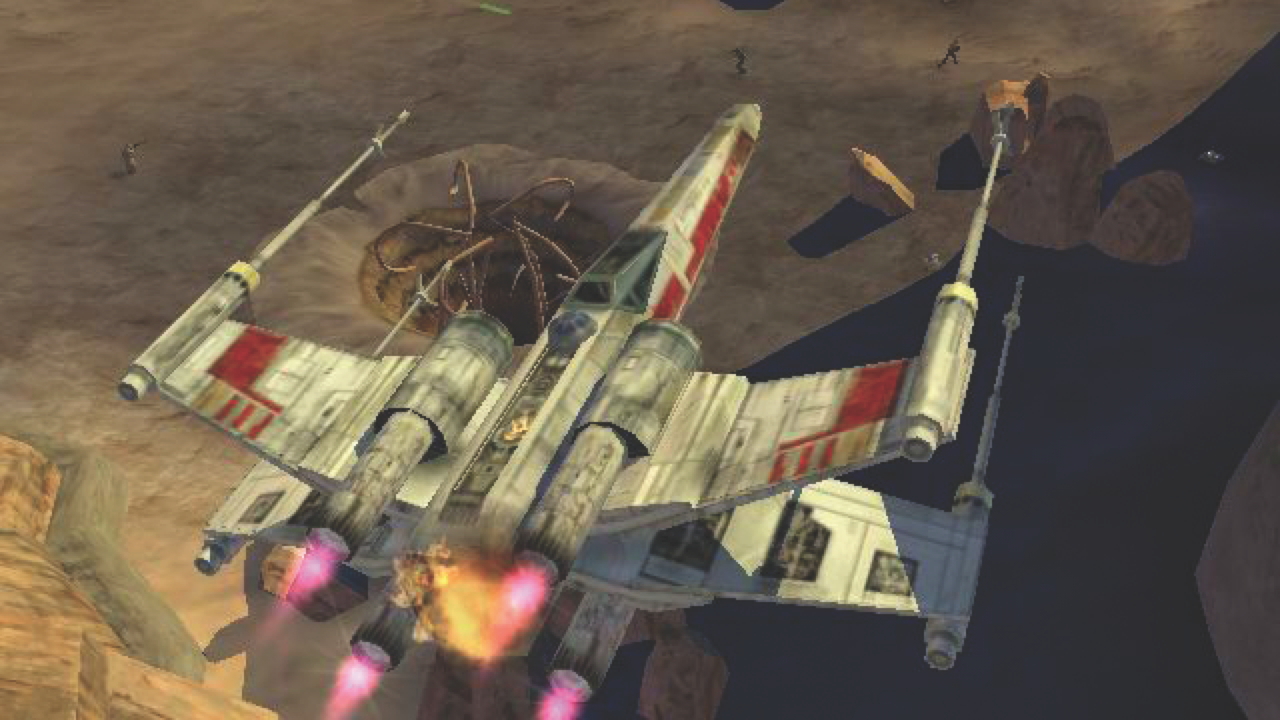
But that’s Battlefront all over. It always ensures that there is plenty to do. Death comes swiftly, particularly if you find yourself surrounded by a cluster of enemies – the flash of a thermal detonator means another tick off of the reinforcement counter. But that is all part of the game’s charm; attempting to stay alive throughout the course of an entire battle unscathed is a genuine point of pride, and it’s all because of how quickly Battlefront establishes that you are simply a cog in the war machine, and that some fights you can just never win, even in a galaxy far, far way.
This is made abundantly clear in Battlefront’s Galactic Conquest game mode, which tasks you with taking turns to battle the enemy forces for complete control of the galaxy. It takes you on a whirlwind journey of the Star Wars universe, pushing you to become bolder and better with your movement and positioning as you jostle for control over famous planets and battlegrounds. Each planet has two battlegrounds to secure, and it’s only through contesting the rival one that you will see victory – with bonuses bestowed upon your forces to assist in the next battle should you be victorious.
This will, eventually, come down to a final battle on a home planet – Kamino for Republic forces, Hoth for Rebellion, Endor for the Empire and Geonosis for the CIS. These are Battlefront’s best moments, with everything coming together in one desperate fight for survival; occasionally you’ll see Jedi heroes stalking the killing floors, reminding you that you are but a lowly soldier as they cut through wave after wave of fighters with little remorse. The fact that this mode is yet to be revived for Battlefront’s new lease on life is still a colossal injustice.
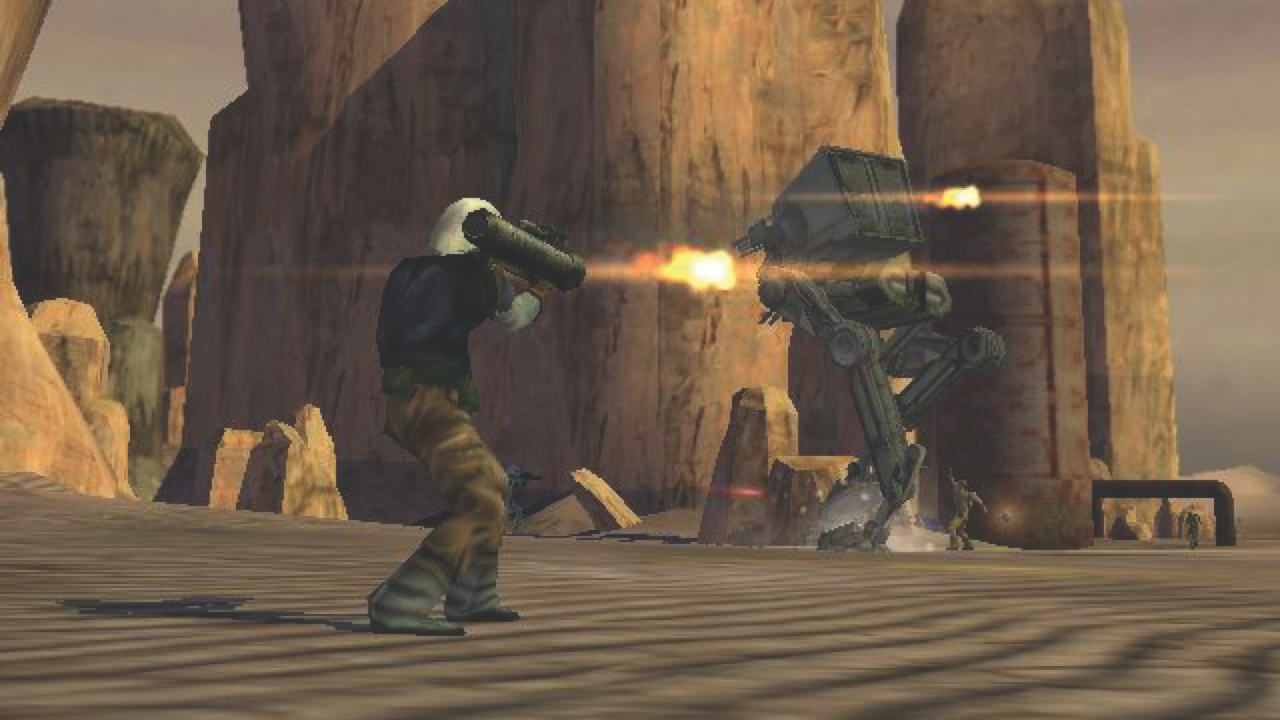
Battlefront works because you are never made to feel like a Luke Skywalker or Darth Vader, nor are you Han Solo or Boba Fett. At a push, Battlefront will make you feel like the infamous Dak Ralter; hero adjacent, boasting about taking on the entire Empire single-handedly just moments before getting caught with your pants down in the back of a snowspeeder.
Back in 2004, Battlefront was vying for attention with Battlefield 1942 – out at around the same time – and the comparisons were apt. Also designed as a multiplayer shooter first, Pandemic attempted to imbue its title with many of the same design pillars and tenants as its closest rival – but it wasn’t driven merely by copycat tactics.
Star Wars, you see, is built around teamwork – if you aren’t dripping with Midi-chlorians, you’ll find that it takes two to take down an AT-AT, and Pandemic wanted to carry that feeling into the game. Its web of classes was designed to interplay with one another, overlapping skills and loadouts for maximum effectiveness. Influencing a single battle is possible, but it requires the team to be working as one, pilots to be dishing out medical and ammunition supplies to keep the snipers and soldiers in good shape as specialists look to clear areas of vehicles and droidekas.
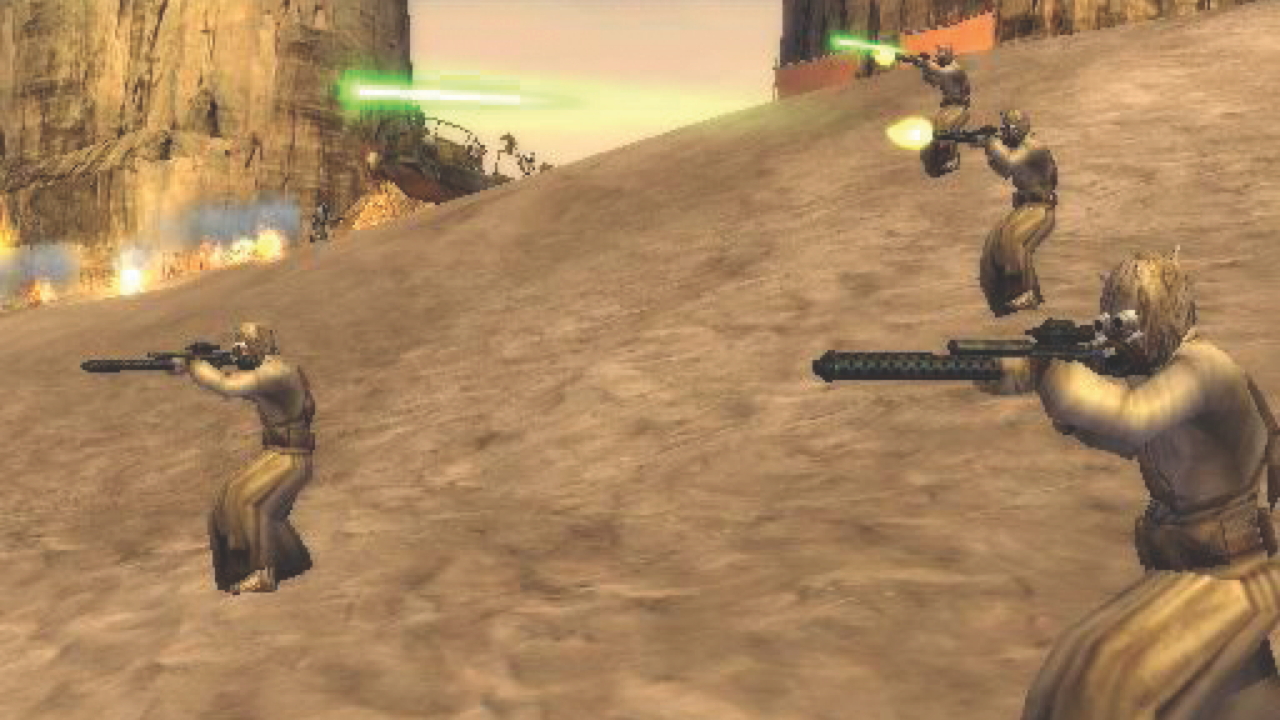
Silly season
Unlike Battlefield, restrained by the somewhat serious nature of its setting, Battlefront was only too happy to embrace how ridiculous Star Wars can be. It doesn’t turn away from the idiocy of the Wilhelm scream, it instead decides to embrace that side of the Star Wars fantasy. It does so to great effect too. Flying an X-wing in the enclosed spaces that you’ll find in a handful of the maps and you’ll fly with all the competency of Jek Tono Porkins, instantly crashing into a piece of the scenery and exploding in a ball of fire and sadness. Tauntauns launch into the air at the first sign of a thermal detonator and ground vehicles explode in a comically overblown fashion, sometimes slowing the framerate to a crawl. But it is difficult to care, because this is what Star Wars has really always been about. Behind the slick visuals, space drama and bombastic battles is a willingness to have a bit of fun, to let you revel in some of George Lucas’ more ridiculous ideas.
For Xbox players, Star Wars: Battlefront was a hint to what was coming in the future. It gave players their first taste of what kind of experience more powerful consoles and stable online servers could deliver. Pandemic teased this further just a year later, delivering a sequel that expanded on every facet of Battlefront’s design. It introduced space combat, expanded the Galactic Civil War, introduced elements that were seen as a success in Battlefield 1942, and even gave you a chance to shine as one of Star Wars’ fabled heroes.
While 2005's Battlefront 2 is seen as the ultimate version of the series, there’s still some Force left in the original. It delivers on the core Star Wars fantasy, bringing you into the conflicts that we had spent so many years expanding and exploring in our heads. It’s playful, and it’s sometimes a little clumsy; it’s awe-inspiring and it’s attention-arresting. It is Star Wars dragged away from the silver screen and put into our palms, and we’ll always love it for that.
This article originally appeared in Xbox: The Official Magazine. For more great Xbox coverage, you can subscribe here.

Josh West is the Editor-in-Chief of GamesRadar+. He has over 15 years experience in online and print journalism, and holds a BA (Hons) in Journalism and Feature Writing. Prior to starting his current position, Josh has served as GR+'s Features Editor and Deputy Editor of games™ magazine, and has freelanced for numerous publications including 3D Artist, Edge magazine, iCreate, Metal Hammer, Play, Retro Gamer, and SFX. Additionally, he has appeared on the BBC and ITV to provide expert comment, written for Scholastic books, edited a book for Hachette, and worked as the Assistant Producer of the Future Games Show. In his spare time, Josh likes to play bass guitar and video games. Years ago, he was in a few movies and TV shows that you've definitely seen but will never be able to spot him in.
